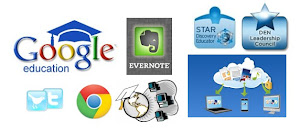Think about one of the main activities most people associate
with kindergarten: finger painting. It’s a simple, messy, fun way for
kindergarteners to learn about color and expand the boundaries of their
imagination.
But with tablets, and an app that simulates finger painting, teachers can unleash the artistic potential of their fresh-eyed students — without all of the usual mess and cleanup.
But with tablets, and an app that simulates finger painting, teachers can unleash the artistic potential of their fresh-eyed students — without all of the usual mess and cleanup.


